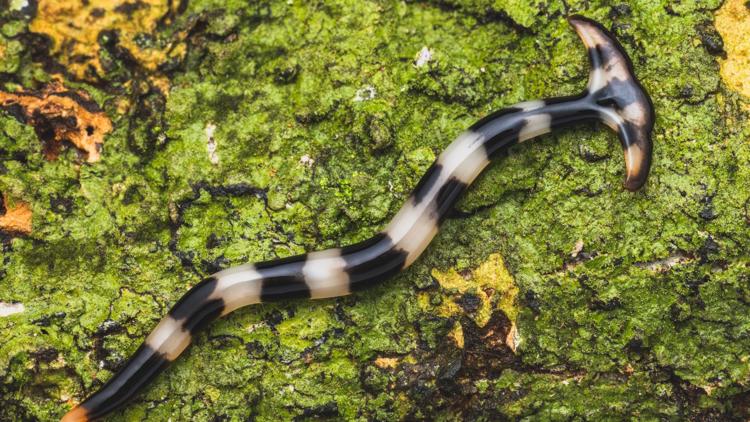Meet the Hammerhead Worm: A Toxic Threat to Earthworms and Gardens

Earthworms are essential players in the garden ecosystem, but there’s another, lesser-known worm on the block that poses a significant threat – the hammerhead worm. These toxic creatures are deadly to earthworms, and almost impossible to eradicate.
Native to Southeast Asia, hammerhead worms found their way to the U.S. in the early 1900s and have since made themselves at home in states with hot and humid climates, like Texas. With a distinctive hammerhead-shaped head and a unique ability to regenerate from severed pieces, these worms are a force to be reckoned with.
Measuring 2 to 3 inches in length and sporting vertical stripes along their bodies, hammerhead worms can grow up to 15 inches long. But it’s not just their size that’s impressive – these worms are equipped with a paralytic neurotoxin, similar to that found in pufferfish, which makes them unappetizing to predators.
Unfortunately, this toxin is also harmful to pets and can cause skin irritation in humans. Additionally, hammerhead worms harbor parasitic nematodes that can affect plants, animals, and beneficial insects. As voracious predators, they feed on snails, slugs, and even earthworms, posing a serious threat to farms and gardens.
One of the most fascinating aspects of hammerhead worms is their ability to reproduce without a mate. In addition to self-fertilization, these worms can detach a portion of their bodies and leave them to grow into new individuals. Cutting a hammerhead worm into pieces will only result in multiple worms, making them incredibly difficult to control.
If you come across a hammerhead worm in your garden, it’s important to handle them with care. Use gloves to pick them up and dispose of them in a plastic bag with salt, vinegar, or citrus oil before freezing them overnight. Avoid cutting them into pieces, as this will only promote their spread.
If you spot a hammerhead worm, report it to the Texas Invasive Species Institute to help track their whereabouts and prevent further spread. By staying vigilant and taking proactive measures, we can protect our earthworms and preserve the health of our gardens.

